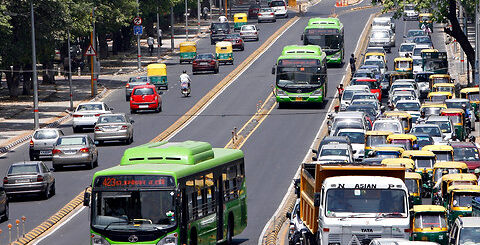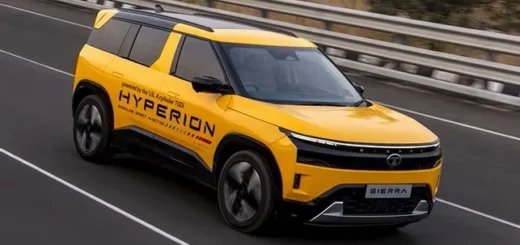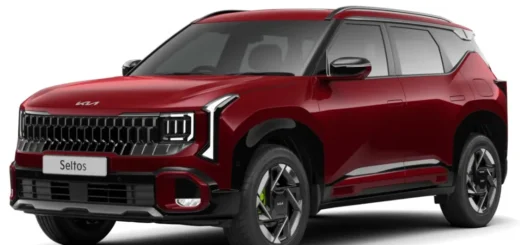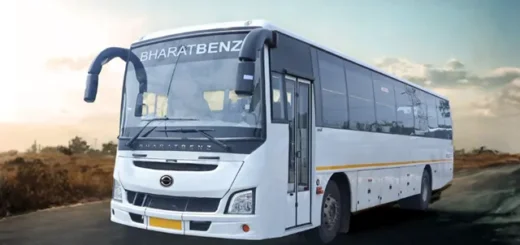Blue Sky Thinking In Public Transport For Sustainability
Innovative interventions using IT solutions and sustainable revenue models essential for turnaround and capital expansion of STUs.

Despite accounting for not more than 10 percent of total buses in India, SRTUs commute over 70 million people every day – thrice larger than the network of Indian Railways
Mobility, the ability and freedom to travel, has always been an integral part of human civilizations. In the 21st century with sprawling urbanization and colossal population, public transportation is increasingly recognized as sustainable means of mobility. The Railways and Metro rail networks in India are either fractured or under-developed and does not offer last-mile connectivity, making buses the most common way to commute people over short and long distances in both metro cities and rural hinterlands. The state-owned bus networks, in particular, help sustain economic and social lives of the citizens, especially those on middle and low incomes, and is critical for social cohesion by enabling them to access education, work and healthcare. The State Road Transport Undertakings (SRTUs), embracing the principle of welfare and Samaritan service, are the sole transporters of people who can’t afford private mobility, have disabilities, and those living in lower-class or remote areas (When was the last time you noticed metro rail network covering a slum within a city?).
Yet, as we all observe, SRTUs are in great distress themselves. They suffer huge operational losses, are not efficient, plagued with poor service, and remain stagnant in terms of strength and capacity enhancement, not even meeting the pace of population growth and urbanization. Unlike any regular business entity, they perform a huge role in the social development of the nation and its citizens more evidently, therefore, their well-being and revival is the need of the hour. The National Seminar and Exhibition on “Sustainability for Public Transport through Innovative Interventions” held on 15th March shared some innovative interventions and alternative revenue models to resurrect SRTUs and make them sustainable, drawing from their own experiments and experiences. The seminar was a part of 61st Annual Conference of Association of State Road Transport Undertakings (ASRTU) – the apex body representing all SRTUs in India.
Also Read: How Private Cars Threaten Democracy And Citizenship?
Speaking on the occasion, Mr. Abhay Damle IRS, Joint Secretary (Transport), Ministry of Road Transport and Highways, said that SRTUs must engineer innovation in the areas of operational costs and value-addition in services, drawing example from the burgeoning taxi industry in metros. He pushed for a ‘balance sheet tally model’ for the transport corporations, even while embracing welfare model of business and plying for social causes. He acknowledged the issue of viability gap in terms of funding for the technological renewals of SRTUs, urging all the stakeholders to overcome such structural constrains by improving occupancy ratio and capacity enhancement.
“Technological interventions and diversification of revenue are key to the prevailing challenges faced by SRTUs” said Mr. Malakondaiah IPS, vice chairman and managing director of Andhra Pradesh SRTC, while referring to the ways and means to make the transport undertakings viable in the present scenario. He identified over 28 streams of non-ticket revenue out of cargo transportation and commercial activity potentials out of existing assets including vehicles, bus stations, depots, etc. On the similar lines, Mr. N Sudershan, Deputy CTM, Telangana SRTC, highlighted TSRTC’s initiatives of leasing out its lands for fuel outlets and co-branding of packaged drinking water sold at leased out kiosks at bus stations as alternative source of revenues.
On taming the high fuel costs that on an average accounts for over 20-25 percent, Mr. Amit Talwar, Director, Chandigarh Transport Undertaking, recognized behavioral change as a key factor in improving vehicle efficiency and road safety. Locating their unique Driver Training Programme as a part of chain management, which resulted in improved mileage of up to 15 percent in test conditions, he added. The CTU has also embarked on Automated Bus Fueling system using RFiD tags on all its vehicles and Management Information System (MIS) to bring down fuel costs.
The Uttar Pradesh State Road Transport Corporation (UPSRTC) gained a lot of awe and appreciation from the participants at the conference, for its incredulous turnaround of Rs. 396.23 lakhs profit (2014-15 Audited) from a cumulative loss of Rs. 13,153.94 lakhs the previous year (audited) – all using the magic wand of IT-enabled management tools and services to its commuters. Mr. Vineet K Seth, General Manager, UPSRTC, said that IT tools do not deliver direct revenues but create an enabling environment which contributes to profitability. He added that these IT solutions reduce cost of operations by generating a stream incremental revenue, along with standardization of business rules and customer-friendly approach. “The improvement in revenue through innovative IT means are used for structural strength and capacity of the network, while aiming to double the passenger capacity”, said Mr. K Ravindra Naik IAS, Managing Director, UPSRTC.
Moving further, speakers at the seminar discussed on the scope of electronic payment in creating a hassle-free revenue model in ticketing and fare-collection, incorporating last mile connectivity and ‘smart mobility’ approaches while designing roadmaps for SRTUs, and the efficacy of developing low-cost mass transit systems in the current scenario. Mr. Sanjay Mitra IAS, Secretary, Ministry of Road Transport and Highways, and President of ASRTU, added new dimensions to the discussion by urging SRTUs to adopt road safety initiatives and expedite shift to hybrid and electric vehicles while carving out their roads to sustainability. He also assured constant patronage and financial support from the central government for the road transport sector, along with strong impetus for infrastructural development and asset creation.
“The SRTUs are islands of excellence (despite multiple challenges plaguing them)”, said Mr. PS Ananda Rao, Executive Director, ASRTU, acclaiming that they perform the best corporate social responsibility (CSR) in the transportation sector as an integral part of their core business. Despite accounting for not more than 10 percent of total buses in India, SRTUs commute over 70 million people every day, and is thrice larger than the network of Indian Railways, he added. He listed out various modules developed by the ASRTU that are up for grabs by SRTUs, like ticketing portal, leasing and hiring models, etc. ASRTU is also offering rate contracts and Vendor Development Registration Schemes (VDRS) to guide and assist regional transport units to procure spares at fair prices.
Also Read: Delhi’s Odd-Even Scheme: Push Towards Public Mobility?
The statistics are worth revisiting. SRTUs have recorded a whooping Rs. 9732.11 crore net loss in the financial year 2013-14, with an increase of 27 percent from the previous period, according to ASRTU. The man power cost is pegged at 33 percent. The revenue earning kilometers has also reported a drop by 2.8 percent. Clearly, SRTUs are not in a position to strengthen their portfolio, that they are unable to generate adequate funds for capital expenditure, replacement of their fleets, and any further expansion to cover unconnected areas. Their over-dependence on the ticketing income (up to 94 percent of total revenue) is a sure-shot liability. Therefore, sustained Viability Gap Funding (VAG) and revival packages (on the lines of Ujwal DISCOM Assurance Yojana (UDAY) for power distribution companies) is essential for all SRTUs to consolidate their position. By no means can any of this public spending be reasonably described as ‘subsidy’ that distorts competitive business, considering the social importance of SRTUs in the lives and development of the masses. Further, public funding of regional bus networks is likely to deliver benefits at least thrice the size of the money being spent on other means of transportation including railways.
However, in the era of liberalized business and unreliable political patronage, state funding is unlikely to be sustainable for the revival and growth of SRTUs. They have to look for multiple streams of revenues and diversified service models, to generate steady source of capital for their modernization and expansion. New revenues can then be cross-subsidized for their welfare and social initiatives like connectivity to remote tribal villages. In this regard, innovative IT and other tech-enabled interventions seems to be effective, as in case of UPSRTC.
*An edited version of this article has been published in the April 2017 edition of MotorIndia Magazine.










